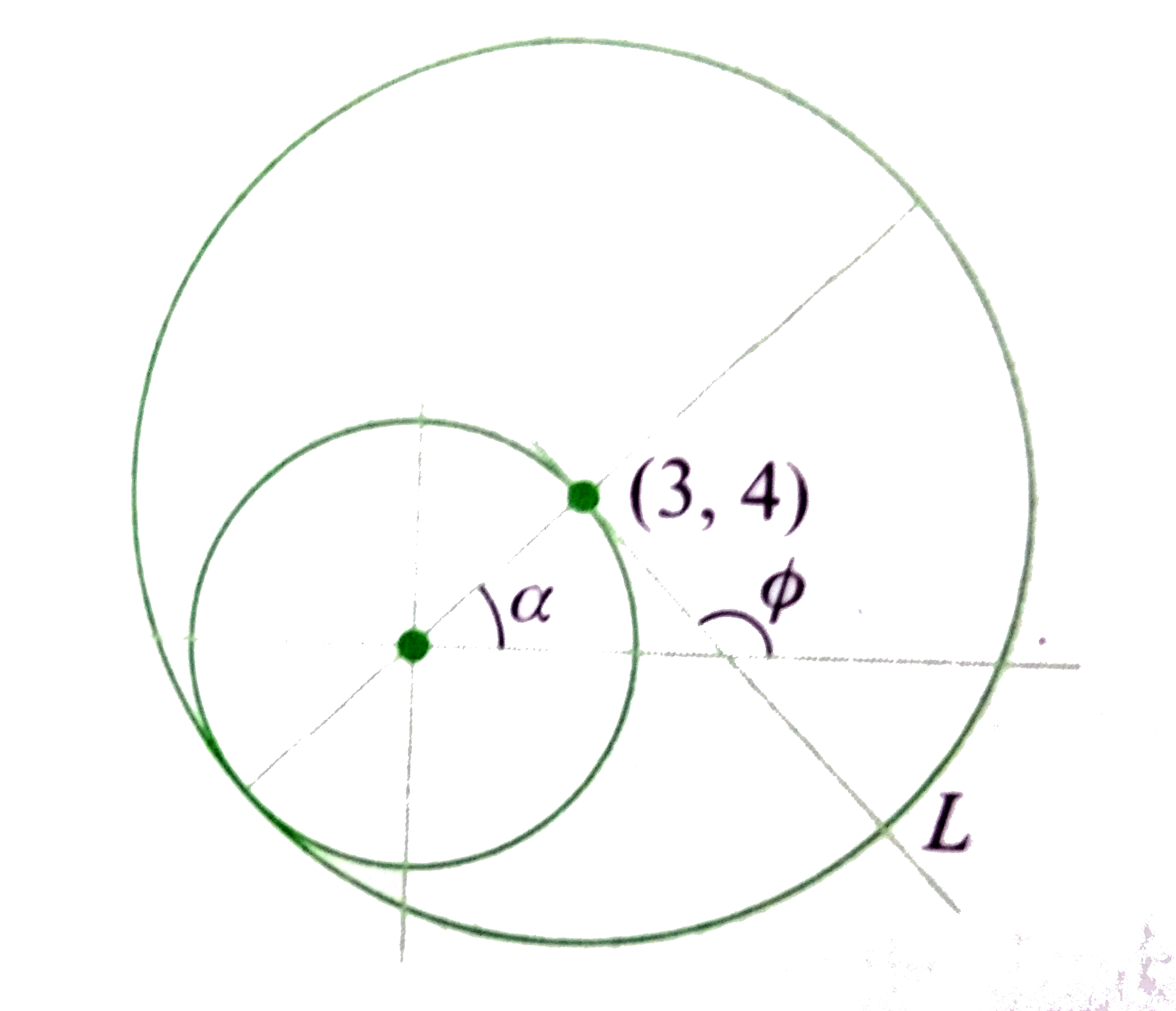Let A,B, and C be three sets such that
A={(x,y)∣xcosθ=ysinθ=5,where'θ'is parameter}
B={(x,y)∣x−3cosϕ=y−4sinϕ=r}
C={(x,y)∣(x−3)2+(y−4)2≤R2}
If ϕ is fixed and r varies and (A∩B)=1, then secϕ is equal to
(a) 54
(b) −54
(c) 53
(d) −53
A
54
B
−54
C
53
D
−53
Text Solution
The correct Answer is:2
A={(x,y)}xcosθ=ysinθ=5, where θ is parameter }
A is set of points which lie of the circle C1:x2+y2=25
B={(x,y)∣x−3cosϕ=y−4sinϕ=r}
Ifϕ varies and r is fixed, then B is the set of all points which lie on a circle C2:(x−3)2+(y−4)2=r2
And if ϕ is fixed and r varies, then B is the set of all points which lie on the straight line L:y−4=tanθ(x−3).

Now, if A∩C=A
Both circle C1 and C2 must touch each other internally.
So, R must be 10.
If ϕ is fixed and r varies and n(A∩B)=1, circle C1 touches line L.
ϕ=90∘+α
∴secϕ=sec(90∘+α)=−cosectα=−54
|
Topper's Solved these Questions
- CIRCLE BOOK - CENGAGE PUBLICATIONCHAPTER - CIRCLE EXERCISE - MATRIX MATCH TYPE
7 Videos
- CIRCLE BOOK - CENGAGE PUBLICATIONCHAPTER - CIRCLE EXERCISE - NUMERICAL VALUE TYPE
21 Videos
- CIRCLE BOOK - CENGAGE PUBLICATIONCHAPTER - CIRCLE EXERCISE - Linked Comprehension Type (For Problem 1-3)
3 Videos
- BINOMIAL THEOREMBOOK - CENGAGE PUBLICATIONCHAPTER - BINOMIAL THEOREMEXERCISE - Comprehension
11 Videos
- CIRCLESBOOK - CENGAGE PUBLICATIONCHAPTER - CIRCLESEXERCISE - Comprehension Type
8 Videos
Similar Questions
Knowledge Check
Let A,B, and C be three sets such that
A={(x,y)∣xcosθ=ysinθ=5,where'θ'is parameter}
B={(x,y)∣x−3cosϕ=y−4sinϕ=r}
C={(x,y)∣(x−3)2+(y−4)2≤R2}
If A∩C=A, then minimum value of R isA5B6C10D11
If xy=13 , then x2+y2x2−y2=? (a) −109 (b) 54 (c) −54 (d) −53
View SolutionFind ∫(3sinφ−2)cosφ5−cos2φ−4sinφdφ
View SolutionIf ysinϕ=xsin(2θ+ϕ) show that (x+y)cot(θ+ϕ)=(y−x)cotθ.
View Solutioncosθ=45,cosϕ=35 then cos(θ−ϕ2)=
View SolutionIf sin2θ+sin2ϕ=12 and cos2θ+cos2ϕ=32, then cos2(θ−ϕ)= (A) 38 (B) 58 (C) 34 (D) 54
View SolutionLet dydx=yϕ'(x)−y2ϕ(x), where ϕ(x) is a specified function satisfying ϕ(1)=1,ϕ(2)=130. If y(1)=1 then y(2) is equal to
View SolutionIf tanθ⋅tanϕ=√x−yx+y prove that (x−ycos2θ)(x−ycos2ϕ)=x2–y2
View Solution
